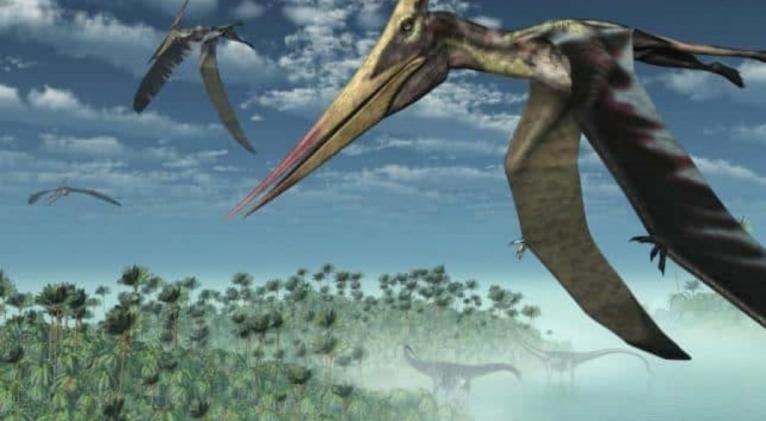We Cubans also had Our Dinosaurs!
especiales

We are now speaking about the fossil remains of a Pterosaur found in Cienfuegos. In fact, it’s not a dinosaur but a large flying reptile as those of Jurassic Park.
Of course when those giant creatures walked or flew on Earth, this island didn't exist neither Cubans. It had been like that, we either tamed them or we ate them, I say.
But the truth is that hardly a few days ago were discovered in Cienfuegos, more accurately south of Rodas, in the so-called Paleontological Damují Region, small fragments of fossilized bones that confirm the presence of vertebrates in the silts of rocks from the Higher Cretaceous.
But researcher Carlos Rafael Borges Sellén was not satisfied with carrying out the discovery. It was necessary to know how old the vertebrate was.
Experts on the subject had suggested him that it could be a flying reptile. As for the geologic age of the remains -as Sellén referred to Granma newspaper-, Doctor Reinaldo Rojas Consuegra, after visiting the site ratified him that it was the Higher Cretaceous.
The puzzle was building up. That flying reptile could be a Pterosaur and thus was confirmed by specialists from other countries consulted by Sellén.
These frightening animals, recreated in movies and cartoons, lived since the end of the Triassic Era, about 205 million years ago, until the end of the Cretaceous, when they went extinct, 65 million years ago.
Although sometimes called flying dinosaurs, they were not actually dinosaurs, but they cohabited with them and they are almost always represented accompanying them. Where there are no mistakes is that they were the first vertebrates in conquering skies, around the Mesozoic Era.
They had a truly terrifying look. Of huge size, some had needle-like teeth standing out of a small hard beak that didn't cover them. They were adorned with large crests, usually shaped by keratin extensions.
Although they had wings made up of membranes with muscles and skin, as they were also plantigrades they walked and ran as any other animal. That skill got lost in time and became the direct ancestors of birds as we know them today.
Despite their looks, those animals ate fish. They fished them flying close to the sea surface. A shark tooth was found in the neck vertebras of the fossil of one of these Pterosaurs, from the gender Pteranodon, indicate that maybe they were a bit silly, or that the sharks were also fast.
Looking at Paleographic Maps of the Jurassic, in the space geographical occupied by Cuba, in the eastern Caribbean, it seems that giant sea reptiles inhabited, oceanic crocodiles and also flying reptiles like the Pterosaur.
In the land ecosystems off the coasts of the primitive Caribbean dinosaurs were frequent, and according with statements to Juventud Rebelde doctor Manuel Iturralde-Vinent, the first report of fossil remains of dinosaurs in Cuba dates of 1949, when Alfredo de la Torre y Callejas reported the finding of a bone 45 centimeters long near the valley of Viñales.
Well, the case is that although hundreds of fossils of Pterosaurs have been found in Africa, Asia, Australia, Europe, North America and South America, it’s the first time that is discovered in this Caribbean island a fossil of those animals.
The fine weather in this side of the planet and mainly beaches, we might get lucky and Spielberg decides to shoot a sixth film of Jurassic Park here.













Add new comment